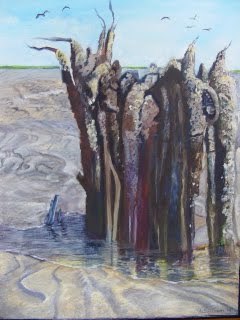"Suffering is
like rope burn. We need to let go." writes Jack Kornfield. Jack is a really good mindfulness teacher as well as a therapist. He continually has a well-seasoned and wise perspective on healthy, constructive practice. All the quotes below are from his book, The Wise Heart.
There is a
sacred quality to the witnessing of our suffering that is different from
suppression or repression. This witnessing is an essential part of meditation,
an attentive and compassionate awareness. Sometimes witnessing is all we have
to do. At other times after witnessing, a strong response is necessary.
Loni, a 38
year old woman, came to a weeklong retreat the year after her diagnosis with
AIDS. In the months since her diagnosis, she had become lost in confusion and
fear. On the retreat, she began to see how much suffering she was creating for
herself. As she relaxed and became more mindful she discovered the fear was worse
than her bodily pains. Loni began to work on releasing the fear each time the
thoughts and feelings arose. At first they were tenacious, sticky, and she
would soften and let go each time. After several days of this, her body
relaxed, her mind eased, and she was filled with a healing love and grace she
wouldn’t have thought possible. Letting go was key.
Another
practitioner, Steve, came on retreat in the middle of a conflict with his grown
children. When he sat in meditation he saw that he was full of blame, fear, and
confusion, that he was grasping at everything they did. Then he noticed that
there were moments when his fear would subside and his heart would open.
Instead of holding tightly to “How it should be,” he could look from the
perspective of “What’s best for everyone at this point?” When he let go even a
little, his caring started to return.
Pillar was
full of blame and anger. She had recently lost her job in a company
restructuring. She believed this was because her patriarchal boss did not like
to promote women. She was so angry she thought about revenge. She wanted to
file a lawsuit against her unjust dismissal. In her meditation, she could feel
how much pain she was in. She was encouraged to study the causes of her
suffering. She realized that if she acted primarily from grasping and anger she
would suffer. She still thought the lawsuit was necessary, but she realized she
could do it differently. If she acted from compassion and care for herself and
those who might follow her, she could choose the same action with much less
suffering.
Be patient
with the process of letting go. Sometimes it seems as though nothing is
happening. This is hard for Westerners who want quick results. We need to learn
to observe the tiny openings along the way. With practice we can let go and
relax into any moments of stillness and compassion. We can begin to trust the
moments of well-being. ...Eventually, even in great pain and difficulty, we
will have learned to let go.
(Excerpted
from Jack Kornfield’s The Wise Heart)

